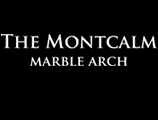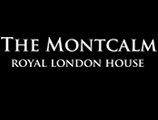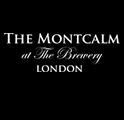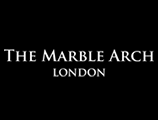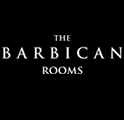Every borough of London has its own unique history. From the outer boroughs of Walthamstow to the inner city Westminster, the vast wealth of amazing attractions knows no bounds wherever you are in London. With such a huge area to traverse, it can be useful to take focus on specific districts of London, ensuring that you have a deeper insight into what can be expected from the city.
Whether you’re using a city break London package for business or for leisure, London can often seem overwhelming at first, and so breaking down the city into bite-sized chunks will help you plan your trip to suit your needs and tastes. Today we’ll focus on Moorgate, one of the most historic central districts of London, and one that blends many of the aspects of the UK capital that make it so popular among tourists and business travellers alike.
Where is Moorgate?
Moorgate is located in the eastern part of the City of London and is a famously historic area of the UK Capital. Incorporating a range of business sectors, historic sites and entertainment, Moorgate is easily reachable for guests at spa hotels near Barbican London and via the Central Line tube station.
History of Moorgate
Moorgate’s history is one of the oldest in the city and dates back to the early 15th century when it was part of the London city wall and acted as a small and unimportant gate into the city limits. One of the last pieces of open land in London, the area was divided into three distinct areas, Middle and Upper Moorfields and Moorfields proper. As time went on, the gate was demolished and replaced in the 16th century, before eventually being removed completely. The area as we know it was developed throughout the late 18th century and has since become a focus for business and retail.
Attractions in Moorgate
Whilst Moorgate is not best known for its tourism, there are plenty of spots to explore if you’re staying in the area. From the broad variety of shops near Moorgate Station to the dazzling historic sites, there’s more than you’d think for tourists in the Moorgate district of the City of London.
London Wall
Whilst there are several known sites to find the London Wall, one of the most prominent sites is in the Museum of London, very close to Moorgate, whilst another is located just behind the Barbican Centre. The London Wall dates back to either the 2nd or the 3rd century and was most likely built by the Romans. With its use carrying on until the medieval era, the remnants of the London Wall have become a real symbol of London’s lengthy past.
Dance’s Obelisk
This unique Finsbury Circus column has often been overlooked by many. With an engraving of one George Dance upon its base, the purpose of the obelisk is quite unusual. Whilst it commemorates the 18th century London surveyor, it also has a more practical use. After the building of Kings Cross Underground, the station’s tube system needed ventilation, one of the shafts for which comes out directly under the statue itself. The obelisk in the centre of Finsbury Square, therefore, acts as both a memorial and as a ventilation shaft!
Guildhall
Built in 1440, the Guildhall has acted as a town hall since its creation and is still the administrative headquarters for the City of London Corporation. With a museum and “great hall” still being used for ceremonial and private functions, this historic institution has ingrained itself within city culture.
Guildhall Art Gallery
The Guildhall Art Gallery is located just adjacent to the Guildhall City of London headquarters and offers up a broad selection of international works that have been collected by the capital city for hundreds of years. With its epic centrepiece being the John Singleton Copley oil painting named The Defeat of the Floating Batteries at Gibraltar, there’s certainly a lot to see here. Even more intriguing, the Guildhall Gallery and complex in general was built above an old Roman amphitheatre, which guests at the art gallery can visit the remains of today.
Hatton Garden District
The Hatton Garden district of Moorgate includes the historic Leather Lane Market street, alongside a dazzling variety of diamond and jewellery merchants. With Hatton Garden’s rich past, it’s unsurprising to find that the area is teeming with top-notch diamond dealers, making for a perfect romantic gift or keepsake from your time in this historic district.
Barbican Centre
With the London Barbican Hotel within walking distance of it, the Barbican Centre should be top of the list when it comes to cultural attractions in Moorgate. With five performance spaces alongside free to visit public exhibition spaces and even a cinema, the Barbican Centre is one of the most important cultural institutions in the country. As one of the biggest multimedia venues in the world, the Barbican Centre brings in international artists performers and musicians for a year-round programme of incredible entertainment. Next year, make sure you don’t miss the Beethoven Weekender on the first weekend of February, as well as photography and cinema events throughout January.
20 Fenchurch Street Sky Garden
20 Fenchurch Street is one of the most prominent buildings in not only Moorgate but the London cityscape as well. With its three floors and 360-degree view over the London skyline, the Sky Garden promises a broad variety of landscaped gardens, observation decks and cafes throughout its striking halls. Located just a 7-minute walk from Moorgate station, 20 Fenchurch Street is one of the most exciting ways to get your bearings on the city.
St Paul’s Cathedral
With the current incarnation dating back to 1675, Christopher Wren’s lavish Cathedral is located on the highest point of the City of London. As one of the most iconic cathedrals in the country, St Paul’s lavish exterior is matched wholly by its incredible interior, having hosted the grand state funerals of figures such as Winston Churchill and Margaret Thatcher. With its English baroque design, St Pauls Cathedral might have had three separate incarnations over the centuries but has always built upon its predecessors, making for a must-see London tourist attraction.

















